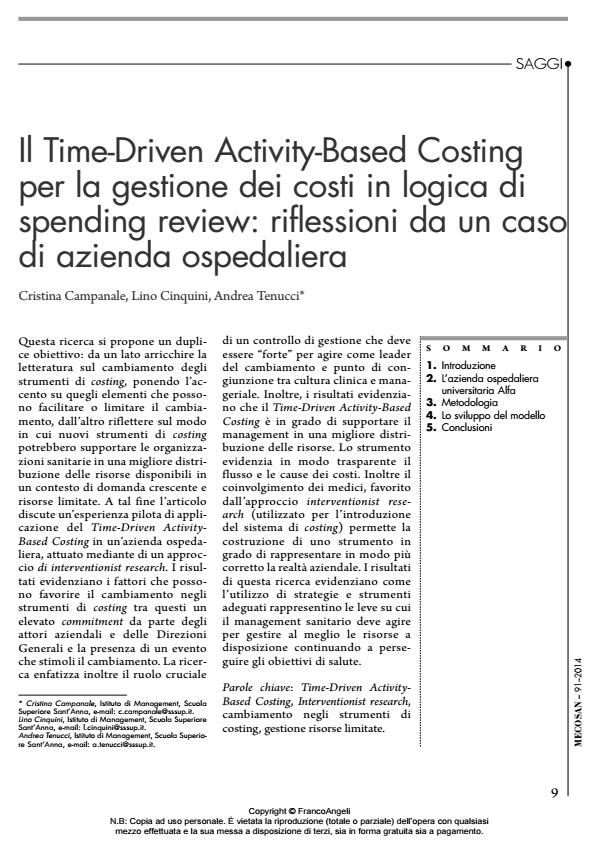Il Time-Driven Activity-Based Costing per la gestione dei costi in logica di spending review: riflessioni da un caso di azienda ospedaliera
Journal title MECOSAN
Author/s Cristina Campanale, Lino Cinquini, Andrea Tenucci
Publishing Year 2015 Issue 2014/91
Language Italian Pages 34 P. 9-42 File size 637 KB
DOI 10.3280/MESA2014-091002
DOI is like a bar code for intellectual property: to have more infomation
click here
Below, you can see the article first page
If you want to buy this article in PDF format, you can do it, following the instructions to buy download credits

FrancoAngeli is member of Publishers International Linking Association, Inc (PILA), a not-for-profit association which run the CrossRef service enabling links to and from online scholarly content.
The aim of this work is twofold: to enrich the literature on accounting change and emphasize those elements that may support or limit the change and reflect on the way in which new costing tools could support healthcare organizations in a better distribution of the available resources, in a context of growing demand and limited resources. To this aim, this paper discusses a pilot project of application of the Time-Driven Activity-Based Costing in a hospital, implemented by means of the interventionist research approach. Results highlight the factors that can promote change costing tools: the high commitment by organizational actors and top management and the occurrence of factors or events that stimulate change. This research also emphasizes the crucial role of accountants as leaders of change and in acting as a connecting points between clinical and managerial culture. Furthermore, the results show that the Time-Driven Activity-Based Costing is able to support the management in a better distribution of resources. The type of costing instrument shows in a transparent way the flow of costs. Further, the involvement of doctors supported by the interventionist research approach used to implement the costing system, allows the construction of a tool able to represent more correctly the flow of costs. The findings in this research show that the use of appropriate tools and strategies are the levers the health management must act to better manage available resources to continue to pursue the objectives of health.
Keywords: Time-Driven Activity-Based Costing, Interventionist research, accounting change, managing limited resources.
Cristina Campanale, Lino Cinquini, Andrea Tenucci, Il Time-Driven Activity-Based Costing per la gestione dei costi in logica di spending review: riflessioni da un caso di azienda ospedaliera in "MECOSAN" 91/2014, pp 9-42, DOI: 10.3280/MESA2014-091002